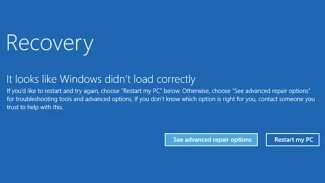sftp
NAME
SYNOPSIS
k -words
DESCRIPTION
is an interactive file transfer program, similar to
ftp(1)
which performs all operations over an encrypted
ssh(1)
transport.
It may also use many features of ssh, such as public key authentication and
compression.
connects and logs into the specified
then enters an interactive command mode.
The second usage format will retrieve files automatically if a non-interactive
authentication method is used; otherwise it will do so after
successful interactive authentication.
The third usage format allows
to start in a remote directory.
The final usage format allows for automated sessions using the
option.
In such cases, it is necessary to configure non-interactive authentication
to obviate the need to enter a password at connection time (see
sshd(8)
and
ssh-keygen(1)
for details).
The options are as follows:
- 1 Specify the use of protocol version 1.
- buffer_size Specify the size of the buffer that uses when transferring files. Larger buffers require fewer round trips at the cost of higher memory consumption. The default is 32768 bytes.
- batchfile Batch mode reads a series of commands from an input instead of Since it lacks user interaction it should be used in conjunction with non-interactive authentication. A of may be used to indicate standard input. will abort if any of the following commands fail: c get , put , rename , ln , c rm , mkdir , chdir , ls , c lchdir , chmod , chown , chgrp , lpwd and c lmkdir . Termination on error can be suppressed on a command by command basis by prefixing the command with a character (for example, c -rm /tmp/blah* ) .
- C Enables compression (via ssh's flag).
- ssh_config Specifies an alternative per-user configuration file for ssh(1) This option is directly passed to ssh(1)
- ssh_option Can be used to pass options to in the format used in ssh_config(5) This is useful for specifying options for which there is no separate command-line flag. For example, to specify an alternate port use: c sftp -oPort=24 . For full details of the options listed below, and their possible values, see ssh_config(5)
- AddressFamily
- BatchMode
- BindAddress
- ChallengeResponseAuthentication
- CheckHostIP
- Cipher
- Ciphers
- Compression
- CompressionLevel
- ConnectionAttempts
- ConnectTimeout
- ControlMaster
- ControlPath
- GlobalKnownHostsFile
- GSSAPIAuthentication
- GSSAPIDelegateCredentials
- HashKnownHosts
- Host
- HostbasedAuthentication
- HostKeyAlgorithms
- HostKeyAlias
- HostName
- IdentityFile
- IdentitiesOnly
- KbdInteractiveDevices
- LogLevel
- MACs
- NoHostAuthenticationForLocalhost
- NumberOfPasswordPrompts
- PasswordAuthentication
- Port
- PreferredAuthentications
- Protocol
- ProxyCommand
- PubkeyAuthentication
- RekeyLimit
- RhostsRSAAuthentication
- RSAAuthentication
- SendEnv
- ServerAliveInterval
- ServerAliveCountMax
- SmartcardDevice
- StrictHostKeyChecking
- TCPKeepAlive
- UsePrivilegedPort
- User
- UserKnownHostsFile
- VerifyHostKeyDNS
INTERACTIVE COMMANDS
Once in interactive mode,
understands a set of commands similar to those of
ftp(1)
Commands are case insensitive.
Pathnames that contain spaces must be enclosed in quotes.
Any special characters contained within pathnames that are recognized by
glob(3)
must be escaped with backslashes
- bye Quit
- path Change remote directory to
- path Change group of file to may contain glob(3) characters and may match multiple files. must be a numeric GID.
- path Change permissions of file to may contain glob(3) characters and may match multiple files.
- path Change owner of file to may contain glob(3) characters and may match multiple files. must be a numeric UID.
- exit Quit
- get Retrieve the and store it on the local machine. If the local path name is not specified, it is given the same name it has on the remote machine. may contain glob(3) characters and may match multiple files. If it does and is specified, then must specify a directory. If the flag is specified, then full file permissions and access times are copied too.
- help Display help text.
- path Change local directory to
- path Display local directory listing of either or current directory if is not specified. may contain any flags supported by the local system's ls(1) command. may contain glob(3) characters and may match multiple files.
- path Create local directory specified by
- newpath Create a symbolic link from to
- lpwd Print local working directory.
- ls Display a remote directory listing of either or the current directory if is not specified. may contain glob(3) characters and may match multiple files.
The following flags are recognized and alter the behaviour of
c ls
accordingly:
- 1 Produce single columnar output.
- a List files beginning with a dot
SEE ALSO
ftp(1)
ls(1)
scp(1)
ssh(1)
ssh-add(1)
ssh-keygen(1)
glob(3)
ssh_config(5)
sftp-server(8)
sshd(8)
.%A T. Ylonen
.%A S. Lehtinen
.%T "SSH File Transfer Protocol"
.%N draft-ietf-secsh-filexfer-00.txt
.%D January 2001
.%O work in progress material



















